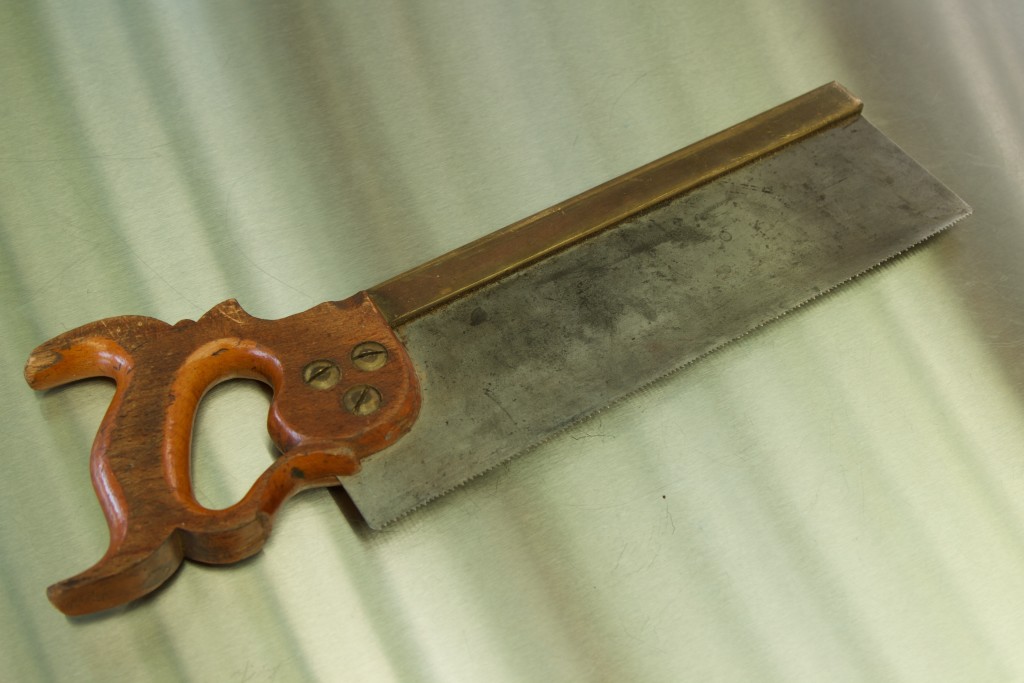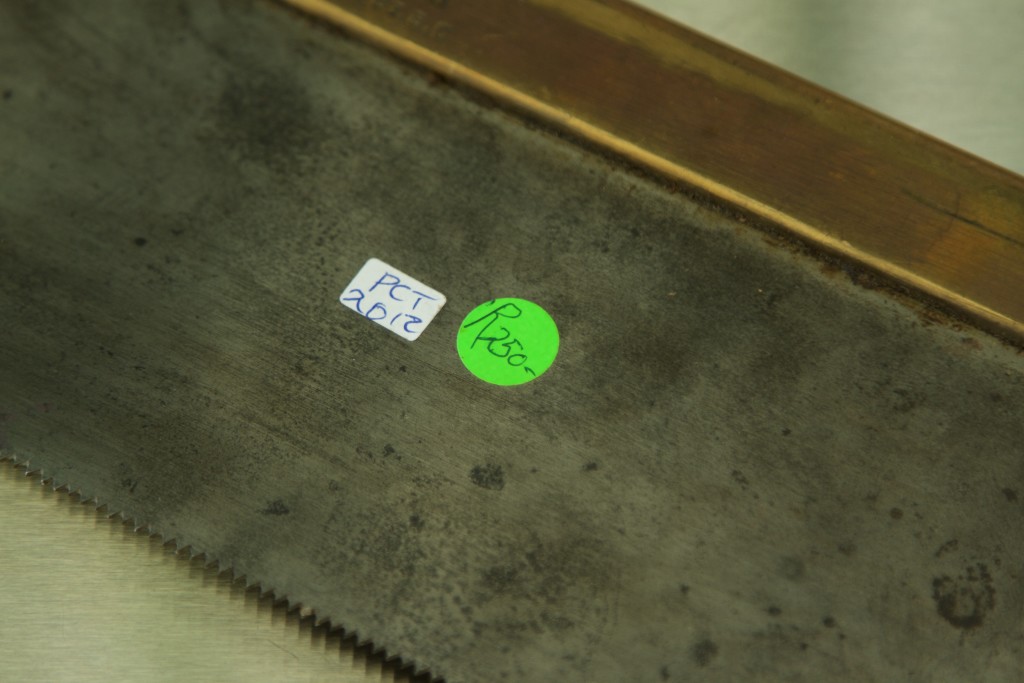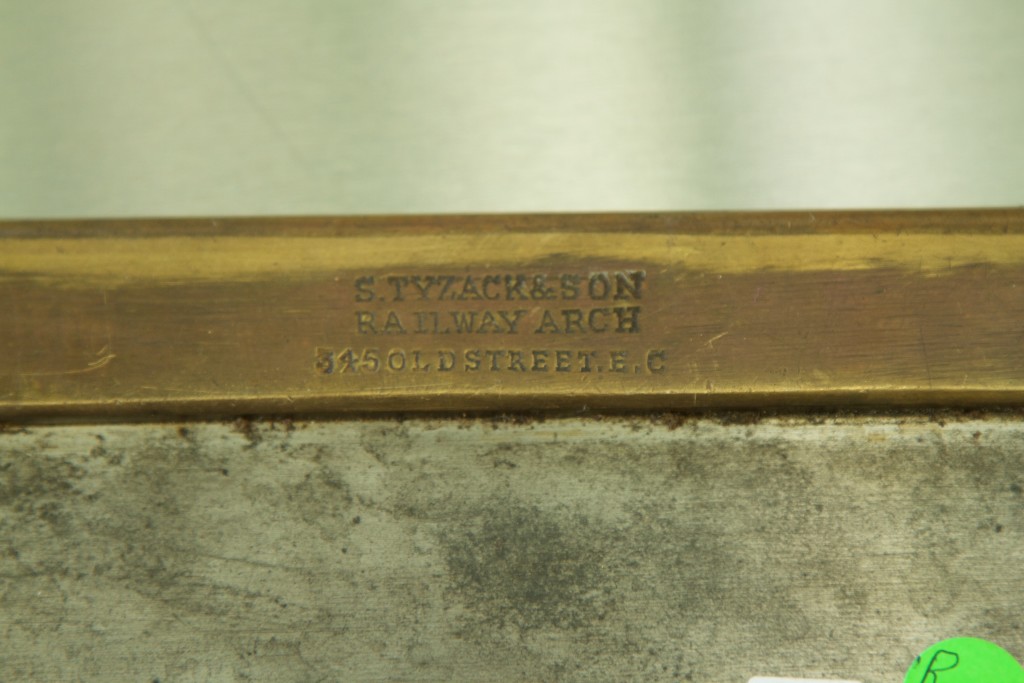2/6/2016
This is a post that I almost forgot about, but since chatting to the famous Bob’s your Uncle Demers (aka The Valley Woodworker) recently it reminded me of the information he found on this saw. As you might remember, this Tyzack was part of my December 2015 tool finds in the Garden route. I asked for help to get an idea of the saw’s history.
I received the below information from Bob Demers on the 10th of March 2016:
In 1839, 30-year-old sawmaker Henry Tyzack moved from Sheffield to Shoreditch, just outside the City of London. Henry’s father Samuel was a sawmaker, as was his younger brother Joseph and his uncle, Thomas Tyzack. We do not know exactly when Henry started making saws and other tools under his own name, but 1843 is the date used by the successor firms. In 1861 or shortly afterwards, Henry transferred the business (with two employees) to his eldest son, Samuel, who in 1860 had leased a small shop of his own. By 1871 Samuel had five employees. Henry died in 1876 and Samuel died in 1903.
The “& Son” in the name S. Tyzack & Son likely refers to Edgar, born in 1877, although another son, Horace, was also involved in the business. The name changed to S. Tyzack & Sons in 1905, after Edgar Tyzack inherited the business.
Throughout its history, the Tyzack firm resold tools made by others and also sold tools that they made themselves. Their product line primarily consisted of hand tools for the carpentry and cabinetmaking trades. This website’s focus is machinery, and this firm is listed here because they made miter trimmers (which straddle the fuzzy line between tools and machines) and, from 1920 to 1959, metal-turning lathes. These lathes, and some of their miter trimmers and related products, used the “ZYTO” brand name.
The company operated until 1987 when it was finally wound down.
http://www.tyzack.net/hackney.htm Early history of the firm
So your back saw is from BEFORE 1905 (when the name changed to Tyzack & Sons)
and AFTER 1860 when he transferred his business to his eldest son.
So between 1861 and 1905.
6th Jan 1871 a city ordnance renumber No 8 old street to No 345
So your saw was made between 1871-1905
In all respect it is a good saw
Cheers
Bob
Clearly there is no mystery in the antique hand tool world too big for Bob to solve.






Great info, thanks guys, more so because I also own a 14in 10ppi myself, (although mine is marked W Tyzack Sons and Turner). Used it on my Roubo tenons (after re-filing its weird fleam toothed setup to the more conventional configuration).
Your saw appears to be in fantastic condition, Gerhard, with probably about the full plate left. Real gem at a bargain price!
Regards
Frank
Cape Town
Hi Frank
Yes it is a real beauty, only problem is that I still have not done anything to it. I think I will do it with a Disston D-8 blade that needs a new handle, but at the moment there are too many other priorities. Let me know when you are ready for another write-up, no pressure of course.
Speak to you soon.
Gerhard
Will do, thanks Gerhard.
I’m just about 90% there but struggling with the last 10% to make it entertaining….! Not quite “writers block”, just that there are also other issues occupying my focus. It’s suppose to be a fun read but currently I’m not getting there. Doesn’t make for fluent reading. Or something like that…
Regards
Frank
Gerhard,
That is a very nice saw. I have a similar one from about the same era, although mine is steel backed not brass. I was always kind of partial to the brass backed versions, but never came across one. Your’s looks to be in excellent condition with only minimal restoration needed. A very nice saw that will last a lifetime.
I agree with Bob on the dating of the saw, but the only thing that doesn’t seem right to me about it is the saw nuts. On the saws that I have encountered, many that date pre-1900-ish, have split nut saw bolts, where as your’s appears to have Chicago screws. I may be wrong (wouldn’t be the first time) or perhaps the screws were replaced at some point. I’d be curious to see what bob thinks about it. I’ll have to go have a second look at mine tomorrow.
All the best,
Jonathan
Hey Jonathan
I am looking forward to the restoration, thought was to do as little as possible. Clean up the blade, joint, sharpen and Bob’s your Uncle. I realised since yesterday that the restoration should be done before our next trip to the beach house as I want to take it along to do some of the electrical work! No, no, just joking!!
Speaking of Bob, I would also like to hear what he thinks of the saw nuts.
Have a wonderful day.
Gerhard
Yes Jonathan, my W Tyzack Sons and Turner also has the split nuts, brass back combination, as well as “ornate” horns and handle. Seemed pretty old.
Would also like to share some pics with you some time because of its weird original fleam toothed sharpening. Perhaps Gerhards’ nuts were changed? (now that sounds a bit off!!) Lol!
Regards
Frank
Frank, Jonathan and Bob
Thank you for the excellent attention to detail and information on this saw. I will take a few close-ups of those nuts (of mine) and post next week. That might help the experts to make a few more deductions.
Cheers panel.
Gerhard
About them saw nuts…
Yes you would think that for the time frame mentioned 1871-1905, that you would expect to see split saw nuts. But look again closely to the back (nuts) of the screws, they have a strange nipple on top in the middle. Not your typical Chicago bolts, and I suspect original to the saw.
here is another saw with similar arrangements
http://www.wkfinetools.com/hUK-Saws/TyzackJ/tools/bSaw/backSaw.asp
It is always possible that they were replaced during the saw life time, but until proven otherwise, Ill stick with being original.
There has been various saw nuts patents thru the years about these little saw nuts, my last favorite being the Chicago bolts versions with no screw slots at all argggg.
Not everyone used split nuts, they are not without their issues, and then you had patents infringements rights etc.
If I ever come across more convincing or disproving finds about it, ill let you know.
Good eye Jonathan 🙂